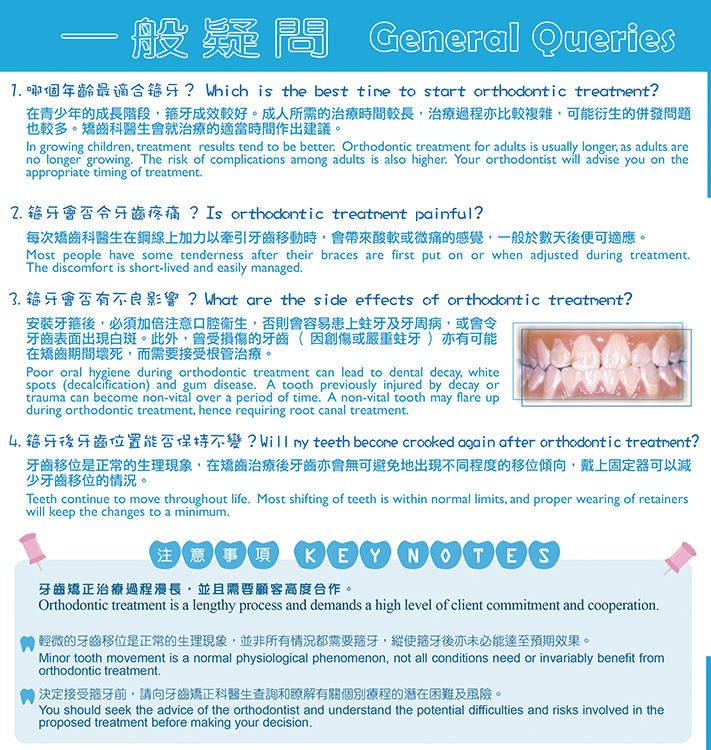Tooth Alignment Take Two

General Queries
1. Which is the best time to start orthodontic treatment?
In growing children, treatment results tend to be better. Orthodontic treatment for adults is usually longer, as adults are no longer growing. The risk of complications among adults is also higher. Your orthodontist will advise you on the appropriate timing of treatment.
2. Is orthodontic treatment painful?
Most people have some tenderness after their braces are first put on or when adjusted during treatment. The discomfort is short-lived and easily managed.
3. What are the side effects of orthodontic treatment?
Poor oral hygiene during orthodontic treatment can lead to dental decay, white spots (decalcification) and gum disease. A tooth previously injured by decay or trauma can become non-vital over a period of time. A non-vital tooth may flare up during orthodontic treatment, hence requiring root canal treatment.
4. Will my teeth become crooked again after orthodontic treatment?
Teeth continue to move throughout life. Most shifting of teeth is within normal limits, and proper wearing of retainers will keep the changes to a minimum.
Key notes:
Orthodontic treatment is a lengthy process and demands a high level of client commitment and cooperation.
Minor tooth movement is a normal physiological phenomenon, not all conditions need or invariably benefit from orthodontic treatment.
You should seek the advice of the orthodontist and understand the potential difficulties and risks involved in the proposed treatment before making your decision.





